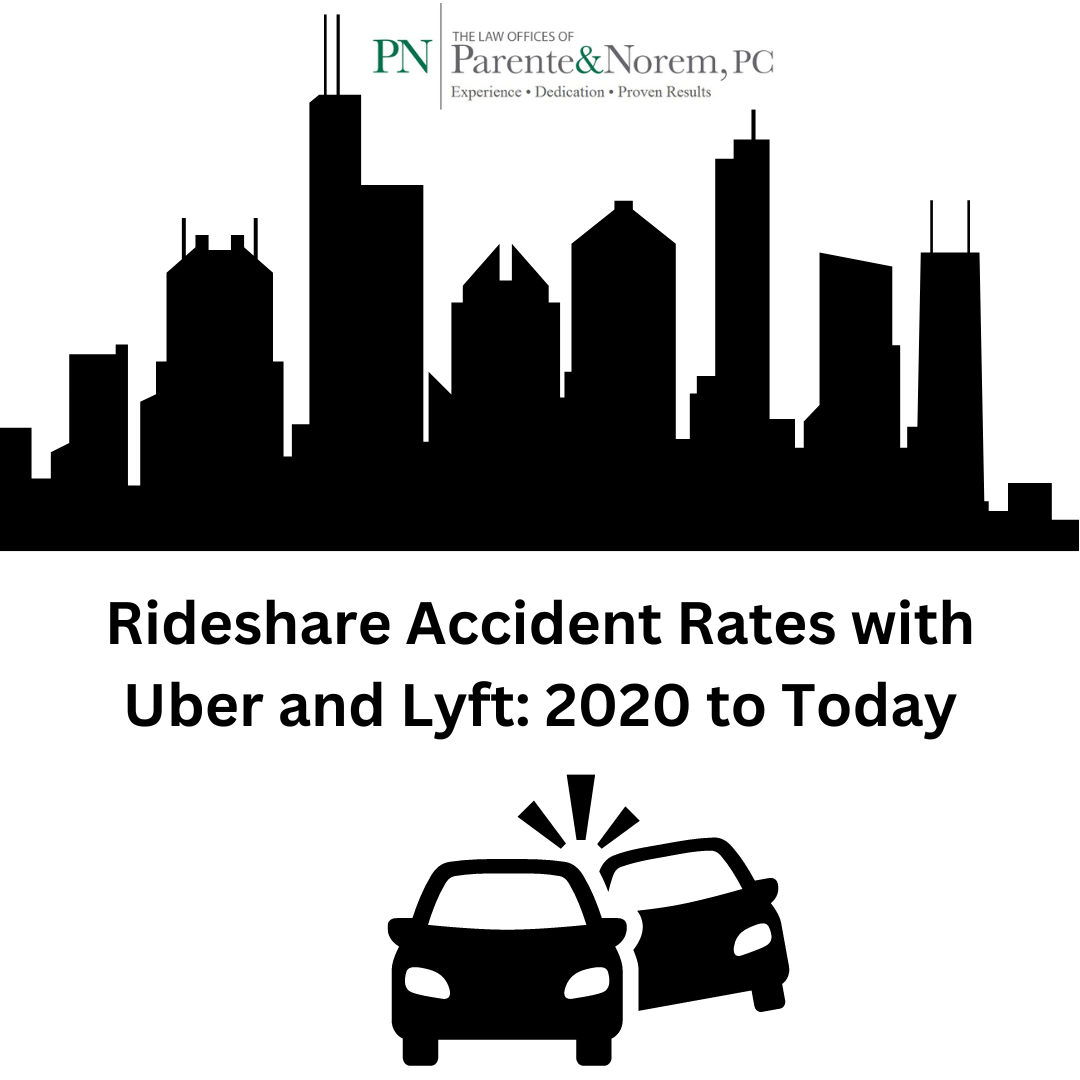
P&N BLOG | Rideshare Accident Rates with Uber and Lyft: 2020 to Today
In recent years, ridesharing services like Uber and Lyft have revolutionized the transportation industry, providing convenient and affordable alternatives to traditional taxis and public transit. However, along with their widespread adoption, questions about safety and accident rates have emerged. From 2020 to the present day, examining accident rates associated with Uber and Lyft offers valuable insights into the safety of rideshare services, the factors influencing accident occurrences, and the efforts undertaken by companies to enhance safety measures.
Rideshare Services and Safety Concerns
Ridesharing platforms have become integral parts of urban mobility worldwide. Uber and Lyft, the two most prominent players in the industry, operate in numerous countries, offering millions of rides daily. While these services provide undeniable benefits such as convenience, cost-effectiveness, and accessibility, safety concerns have been raised since their inception.
Several factors contribute to rideshare accidents, including:
Driver Behavior: The behavior of rideshare drivers significantly impacts accident rates. Factors such as speeding, distracted driving, and fatigue can increase the likelihood of accidents.
Road Conditions: Poor road conditions, inclement weather, and construction zones can pose challenges for rideshare drivers, potentially leading to accidents.
Other Drivers: Accidents involving rideshare vehicles can also result from the actions of other drivers on the road, including reckless driving, failure to yield, and driving under the influence.
Vehicle Maintenance: The condition of rideshare vehicles, including maintenance and upkeep, can affect safety. Mechanical failures or issues with brakes, tires, or lights may contribute to accidents.
Passenger Behavior: While less common, passenger behavior can also play a role in rideshare accidents. Actions such as distracting the driver, refusing to wear seatbelts, or becoming aggressive can increase the risk of collisions.
Rideshare Accident Statistics
Uber and Lyft, the household names in ridesharing, have long touted their services as a solution to reduce traffic fatalities, particularly those stemming from drunk driving incidents. Numerous studies have supported this, albeit with some nuances. One study found a “significant decrease in convictions for impaired driving” associated with the introduction of rideshare services, indicating a promising step forward in road safety.
There is undeniable validity in opting for Uber, Lyft, or any rideshare service, especially on a night out involving alcohol. These services provide a convenient and responsible alternative to getting behind the wheel after drinking.
However, the overarching claim that rideshare services inherently reduce overall traffic fatalities remains a topic of contention. Contrary to the optimistic narratives propagated by Lyft and Uber, experts from the University of Chicago found that 3% of the annual increase in vehicular deaths could be linked to the prevalence of rideshare services on the road.
A brief overview of rideshare accident statistics and facts reveals some sobering realities:
- According to the University of Chicago, approximately 987 roadway deaths each year have been linked to the presence of Uber and Lyft drivers, constituting the 3% annual increase in tragic traffic fatalities.
- These rideshare-associated deaths are attributed to the companies’ reliance on a high volume of drivers on the road to ensure prompt response times for consumers.
- Despite the University of Chicago’s findings, a study highlights the positive impact of rideshare services in reducing drunk driving incidents.
In an effort to maintain transparency and accountability, both Uber and Lyft have been publishing annual safety reports since 2017. Let’s take a look at the statistics provided by these reports –
Uber Accident Statistics and Lyft Accident Statistics:
In 2019 and 2020, Uber claimed that nearly 100% of rideshare trips ended without any safety incidents, with only approximately 0.0002% of trips involving critical safety events.
Lyft reported similar figures in their safety reports, even asserting superiority in certain categories compared to Uber.
Rideshare vehicles are not immune to traffic fatalities. Between 2017 and 2018, Uber cars were involved in nearly 110 accident-related deaths across 97 fatal crashes. In these incidents, riders and drivers each accounted for 21% of the fatalities, with the remaining victims being third parties.
Ridesharing has reshaped transportation, particularly in urban areas. It provides an accessible, on-demand transportation option, impacting public transport usage. During the COVID-19 pandemic, public transportation trips in the US decreased by 53%, while Uber trips only declined by 27%.
This shift indicates a growing preference for ridesharing over traditional public transportation, which may have long-term implications for urban planning and traffic dynamics.
Company Reports and Disclosure
Uber and Lyft regularly release safety reports and disclose accident-related data as part of their commitment to transparency and accountability. These reports typically include information on the number of accidents, fatalities, and injuries involving rideshare vehicles, as well as initiatives and safety measures implemented by the companies.
Government Statistics and Regulatory Oversight
Government agencies responsible for transportation and safety regulation also play a role in monitoring rideshare accident rates and enforcing safety standards. Agencies such as the National Highway Traffic Safety Administration (NHTSA) in the United States and equivalent bodies in other countries collect and analyze accident data, conduct investigations, and implement regulations to enhance rideshare safety.
Ridesharing services like Uber and Lyft have transformed the way people move around cities, offering convenience, affordability, and accessibility. However, safety concerns remain a critical issue for both passengers and drivers. From 2020 to the present day, analyzing accident rates associated with Uber and Lyft reveals important insights into the factors influencing safety, the impact of external events such as the COVID-19 pandemic, and the efforts undertaken by companies to mitigate risk and enhance safety measures.
If you or someone you know has been injured in a rideshare accident, call/text The Law Offices of Parente & Norem, P.C. at 312.641.5926 for a free case evaluation or fill out a contact form here on our website.
Latest Posts
P&N BLOG | What Compensation Can You Seek in a Personal Injury Claim?
If you’ve been injured due to someone else’s negligence or wrongful actions, understanding your rights and the compensation available is essential....
P&N BLOG | 8 Common Myths About Personal Injury Law Answered
When you're injured due to someone else’s negligence, navigating the legal process can feel overwhelming. Unfortunately, many people shy away from...
P&N BLOG | The Critical Role of Personal Injury Lawyers
Accidents can occur unexpectedly, leaving victims with physical injuries, emotional distress, and financial burdens. Victims have the right to...
